#hana-kimi for you in full blossom
Text
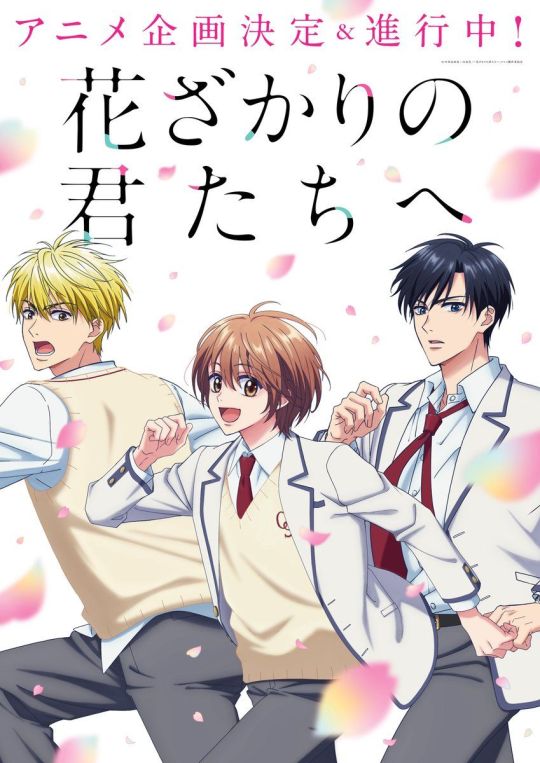
“Hanazakari no Kimitachi e” The Manga For Gets Anime
The production studio Aniplex unveiled a teaser image (shown above) on the official website for the anime adaptation of Hisaya Nakajo's manga series Hanazakari no Kimitachi e (Hana-Kimi: For You in Full Blossom).
#hanazakari no kimitachi e#hana-kimi for you in full blossom#izumi sano#shuichi nakatsu#hokuto umeda#anime#anime adaptation#anime news
2 notes
·
View notes
Text
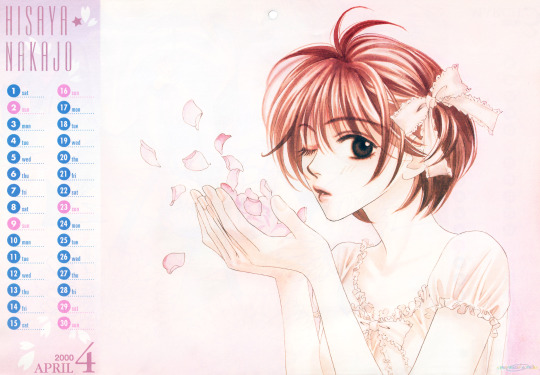
Series: Hanazakari no Kimitachi e
Artist: Nakajou Hisaya
Publication: Hana to Yume #1 (01/2000)
Details: Hanayume 2000 Calendar - Super 15 Characters (April)
Source: Scanned from my personal collection
#hanazakari no kimitachi e#花ざかりの君たちへ#hana kimi#for you in full blossom#nakajou hisaya#hisaya nakajou#nakajo hisaya#hisaya nakajo#scan: hotwaterandmilk#furoku#hana to yume#shoujo#00s manga#manga girl#manga art
92 notes
·
View notes
Text
“Queering” Heteronormativity: Biological essentialism in genderbending manga

CONTENT WARNING: Discussion of transphobia, queerphobia, and gender essentialism.
SPOILERS: General discussion of Hana-Kimi and W Juliet.
When a manga bills itself as “genderbending,” the reader might expect the series to experiment with gender nonconformance—that is, gender expression or identity that’s not aligned with traditional assigned-at-birth gender (this includes everything from binary and nonbinary trans people to butch cis women to drag performers). Unfortunately, however, the genderbending genre is rife with series that simply use queer window-dressing to tell a fundamentally non-queer, heteronormative story.
The framework of “[cis girl or boy] must pretend to be [“opposite” gender] in order to [accomplish bizarre main plot driver] before getting together with [“opposite” gender co-lead], thus restoring their [femininity or masculinity]” invites biological determinism by making the plot’s stakes dependent on the successful concealment of the main character’s “true” (here, meaning “assigned-at-birth”) gender. The idea of a “true” biological gender is itself a transphobic trope that does harm to the gender-nonconforming communities that genderbending manga purports to represent.
Read it at Anime Feminist!
#hana kimi#for you in full blossom#shoujo#w juliet#90s shoujo#mizuki ashiya#gender non conforming#lgbtq+#articles
55 notes
·
View notes
Text
Some sad news to share - Shoujo mangaka Hisaya Nakajo, best known for her long-running series Hana-Kimi (For You In Full Blossom) has passed away at the age of 50 due to a heart condition. Hana-Kimi ran from 1996 to 2004 in Japanese shoujo magazine Hana to Yume, and was officially released in English in the US by Viz Media. The series revolved around a girl named Mizuki, who becomes so infatuated with high-jump competitor Izumi that she disguises herself as a boy to attend his all-boy high school to meet him. The series was popular enough to get multiple live-action dramas, including in Japan, South Korea, and Taiwan. While Hana-Kimi was her only big hit, it was popular not just in Japan, but overseas as well. RIP to a beloved shoujo manga creator.
#news#Hisaya Nakajo#Hana Kimi#hanazakari no kimitachi e#90s shoujo#shoujo manga#links out#death#for you in full blossom
108 notes
·
View notes
Photo


HANAZAKARI NO KIMITACHI E 花ざかりの君たちへ — ch.144
⌊ 1996 - 2004 | nakajo hisaya ⌉
#hanazakari no kimitachi e#for you in full blossom#hana kimi#hanakimiedit#nakajo hisaya#shoujo#shoujoedit#mangacap#mangasedit#fymanga#mangaedit#fymanganime#dailyanime#anisource#monochrome#manga#animanga#itsmangacap#moonlightsqueue
57 notes
·
View notes
Text



"You're the one...who I want to keep...by my side."
Thank you Hisaya Nakajo.
2023.10.12
#I'm so sad I really liked her manga#manga#anime#shoujo manga#Hisaya Nakajo#Hanazakari no Kimitachi e#花ざかりの君たちへ#hana kimi#For You in Full Blossom#her art was on another level#20231012#sano#mizuki#nakatsu#thank you Sensei
36 notes
·
View notes
Photo



Hana Kimi (2007)
#Hana Kimi#jdrama#japanese drama#Hanazakari no Kimitachi e#userdramas#asiandramasource#toma ikuta#For You in Full Blossom#asiancentral#asiandramanet#dailyasiandramas#jdramaedit#mygif
109 notes
·
View notes
Text

That Hana-Kimi anime announcement got me like: 😩😩😩🌸🌸🌸✨✨✨💕💕💕😳😳😳🫡🫡🫡
#everything is riding on this for me…😳😳😳#I’m on my final straw and I’m holding onto my babies with all I got#I’ve got to do it for them#I have to be strong for them#Natsu…Mizuki…Sano…I will be strong 🫡#hana kimi#for you in full blossom#do it for them#shoujo#shojo#shojo romance#anime#anime and manga#manga#meme#memes
10 notes
·
View notes
Text


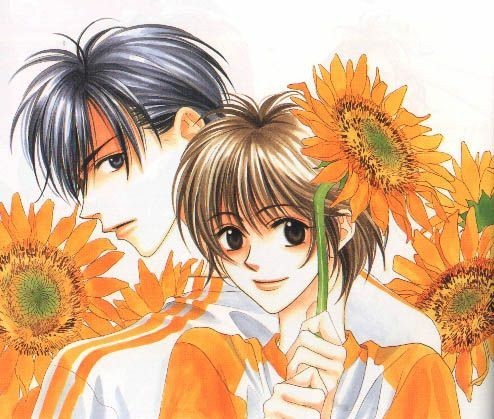
I made a mistake so don't look closer
I'll post this later on my ig
#hana kimi#for you in full blossom#hisaya nakajo#drawing#fanart#ibispaintdrawing#ibispaintx#chibi art#artwork#chibi#moe art#aesthetic#shoujo#art
10 notes
·
View notes
Text


Hana-Kimi Vol 3
#rainbow reading#manga(visual)monday#hana kimi#For You in Full Blossom#Hanazakari no Kimitachi e#hisaya nakajo#mizuki ashiya#shuichi nakatsu#romance#manga#mangacap
4 notes
·
View notes
Text
I recognized that I have missed so many (there's a lot out there lol). I didn't want any sequel to ones that are animated, so here are some others I thought about but didn't ultimately include:
The Water Dragon's Bride
W-Juliet
From Far Away (Kanata Kara)
Zettai Heiwa Daisakusen
St. Dragon Girl / St. Dragon Girl Miracle
Sakura Hime
NG Life
Shoujo Tenshi Milcute
Mugen Spiral
Demon Love Spell
#dengeki daisy#qq sweeper#queen's quality#millennium snow#black bird manga#dawn of the arcana#reimei no arcana#absolute boyfriend#hana-kimi#Hanazakari no Kimitachi e#Hana-Kimi: For You in Full Blossom#kiss of the rose princess#Barajou no Kiss#red river manga#Sora wa Akai Kawa no Hotori#red river#alice 19th#sweat and soap#Ase to Sekken
13 notes
·
View notes
Text

Series: Hanazakari no Kimitachi e
Artist: Nakajou Hisaya
Publication: Hana to Yume #1 (01/1998)
Details: Hana to Yume Deluxe Illustration Calendar 1998 (7-8)
Source: Scanned from my personal collection
#hanazakari no kimitachi e#花ざかりの君たちへ#hana kimi#for you in full blossom#nakajou hisaya#hisaya nakajou#nakajo hisaya#hisaya nakajo#scan: hotwaterandmilk#furoku#hana to yume#shoujo#90s manga#shoujo manga#manga couple#comedy manga#romance manga#shojo manga#shojo
45 notes
·
View notes
Text
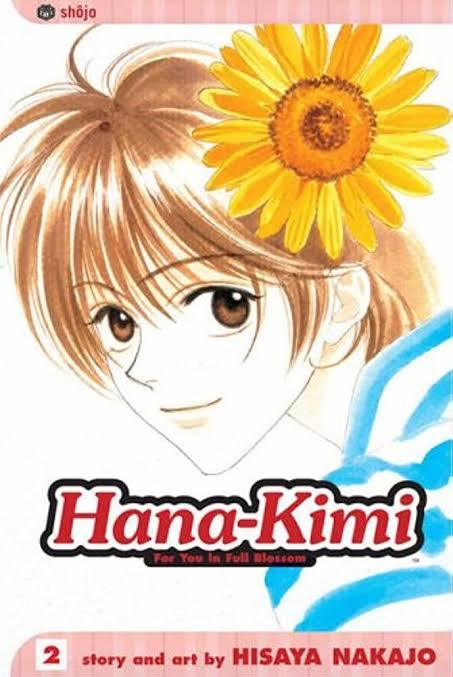
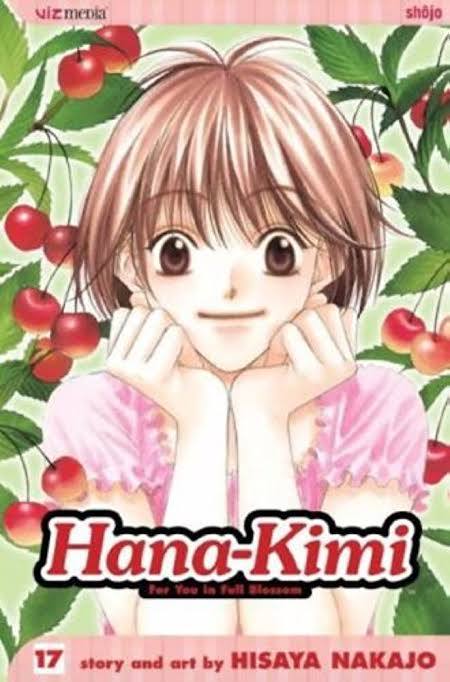
I should re-read Hana Kimi soon🫶
5 notes
·
View notes
Text

📢 HANA-KIMI: ANNUNCIATO L'ANIME, ARRIVERÀ IN STREAMING SU CRUNCHYROLL!
La conferma dell'adattamento, basato sullo shojo manga firmato da Hisaya Nakajo (Sugar Princess, Momo mo motto!), arriva a 20 anni dalla conclusione della sua storia, pubblicata in patria fra il 1996 e il 2004.
Tristemente, l'autrice non potrà vedere i suoi personaggi prendere finalmente vita, perché ci ha lasciati lo scorso autunno. Per chi volesse recuperarsi il fumetto, è stato portato in Italia da Dynit e ancora qualche volume si trova, guardandosi un po' in giro.
#hana-kimi#shojo#comedy#romance#gender bender#school#reverse harem#manga#shoujo#hanakimi#per voi in piena fioritura#hanazakari no kimitachi e#annuncio#anime#crunchyroll#streaming#simulcast#sub ita#dynit#giappone#anime news#for you in full blossom
0 notes
Photo



HANAZAKARI NO KIMITACHI E 花ざかりの君たちへ — ch.106
⌊ 1996 - 2004 | nakajo hisaya ⌉
#hanazakari no kimitachi e#for you in full blossom#hana kimi#hanakimiedit#nakajo hisaya#shoujo#shoujoedit#mangacap#mangasedit#fymanga#mangaedit#fymanganime#dailyanime#anisource#monochrome#manga#animanga#itsmangacap#moonlightsqueue#official translation
58 notes
·
View notes
Text
Namonaki Watashi
名も無き = lit. "without a name," pre-noun adjective that can mean "anonymous," "ordinary," or—as I believe befits this song—"insignificant". Notably, 無き is an older form of ない, but while the latter functions as a complete clause, the former requires a noun follow it.
Verse 1
一雫雨を 一雫ください
hitoshizuku ame wo hitoshizuku kudasai
一雫愛を 一雫ください
hitoshizuku ai wo hitoshizuku kudasai
One drop of rain, please give me one drop
One drop of love, please give me one drop
The dictionary puts 一滴 (いってき, alternatively ひとしずく) as more common than 一雫 (ひとしずく). However, the latter seems to be more literary, used for sake labels, restaurants, and a 2002 hit song by the female J-pop group, Zone.
Additionally, 雫 is distinctly a kokuji, or "country character," one of Japan's creations without a Chinese equivalent. It's purely hieroglyphic as such, literally depicting that which falls from a cloud.
Prechorus 1
名も 無い わたしは あなたと 出会いました
namonai watashi wa anata to deaimashita
名も 無い わたしにも 蝶や 風や 夢が‥
namonai watashi ni mo chou ya kaze ya yume ga...
I, who am insignificant, met you (for the first time)
Even I, who am also insignificant, (the) butterflies, (the) wind, (the) dream...
Sakurai uses the older form of Namonaki in the title only, but uses the more modern form in the lyrics themselves. In the Japanese, the difference is extremely subtle, with only one phoneme changing from -ki to -i. The grammatical implication in English is far more clumsy, but worth exploring to see the difference: The title reads "Insignificant Me" while the lyrics read "I, who am insignificant,..."
The line ends with ellipses, leaving the thought unfinished, and the use of ya for "and" implying the list is only a part of all that is in the scene give the verse an impressionistic feel.
Chorus
狂い咲く 花たちよ 今は 咲き乱れよ
kuruizaku hana-tachi yo ima wa sak'mi dare yo
狂い咲く 命共 乱れ 乱れ 乱れ
kuruizaku inochi domo midare, midare, midare
Fellow flowers blooming out of season, bloom profusely now!
Fellow flowers blooming out of season, together live wild, wild, wild!
I adore the use of kuruizaku here. Of course, kuruu is a familiar verb in Buck-Tick's lyrics, whether it refers to going mad with love or at the state of the world or simply "going crazy." Here it's used in a set phrase referring to off-season blooming. And as with kemono-tachi (from "Beasts of Night"), the narrator includes himself among those he is speaking to: outcasts and others who "don't fit in."
Sakimidare, another set phrase, lends itself to the imagery of endless fields of blooming flowers so thick that you can't see the green leaves beneath them, or even the peak day of cherry blossom season when the world is awash in pink.
I've used an apostrophe unconventionally here to refer to Sakurai's pronunciation. The word has five full mora (sa-ki-mi-da-re), but Sakurai sings it in four (sa-k'mi-da-re). I actually could not make it out in the album version of the song; only upon listening to the "Taiyo to Ikarosu" B-side at high volume could I hear the separate consonants distinctly fitted into one note.
As a lone verb midareru means "falling into disarray," but as a repeated call lends itself better to "lapsing into chaos," and I was tempted to choose "riot" as a command due to the character's more direct translation. However, following the previous line with the set phrase sakimidare, there is an implication that it attaches itself to inochi domo the same way, meaning a closer translation might be, "together, live exuberantly." Think Carpe diem ("Seize the day") with the raving enthusiasm of Scrooge on Christmas morning.
Verse 2
ありがとう 愛を 陽だまりの 日々を
arigatou ai wo hidamari no hibi wo
一輪の 花を 髪飾り 君に
ichirin no hana wo kamikazari kimi ni
Thank you, for the love, for day after day in the sun
For the single flower adoring your hair
Prechorus 2
名も 無い わたしに あなた と お別れ 来た
namonai watashi ni anata to o-wakare kita
名も 無い わたしにも 赤や 黄の 夢が‥
namonai watashi ni mo aka ya ki no yume ga...
You and I, who am insignificant, bid farewell
Even I, who am insignificant, (the) red and yellow dream...
Although the lyrics imply simply that the flower speaking (perhaps the very one in the listener's hair from the previous line) was discarded, it's hard to listen to this line as one of the last lyrics in the last song presented to us on Sakurai's last recorded album.
As before, ya implies there are more colors, though red and yellow are noteworthy for the line. I don't know whether it was intentional, but it calls back the first line of "Gessekai": Aka ki iro himawari, "red, yellow sunflowers".
Instrumental Bridge
Chorus
Chorus
Sakurai often wrote lyrics from the point of view of a particular character in his mind, performing a role on stage. However, I am tempted to read this one assuming less use of the figurative mask. It seems very in his character to express such humility, to refer to his fans (and/or his family, as I have also suspected of other songs of his) as the source of his sunshine and objects of his gratitude, and to plead us all to live our lives to our fullest.
#buck tick#buck tick lyrics#izora#izora lyrics#“adorning” not “adoring”#damn inability to edit reblogs...
54 notes
·
View notes